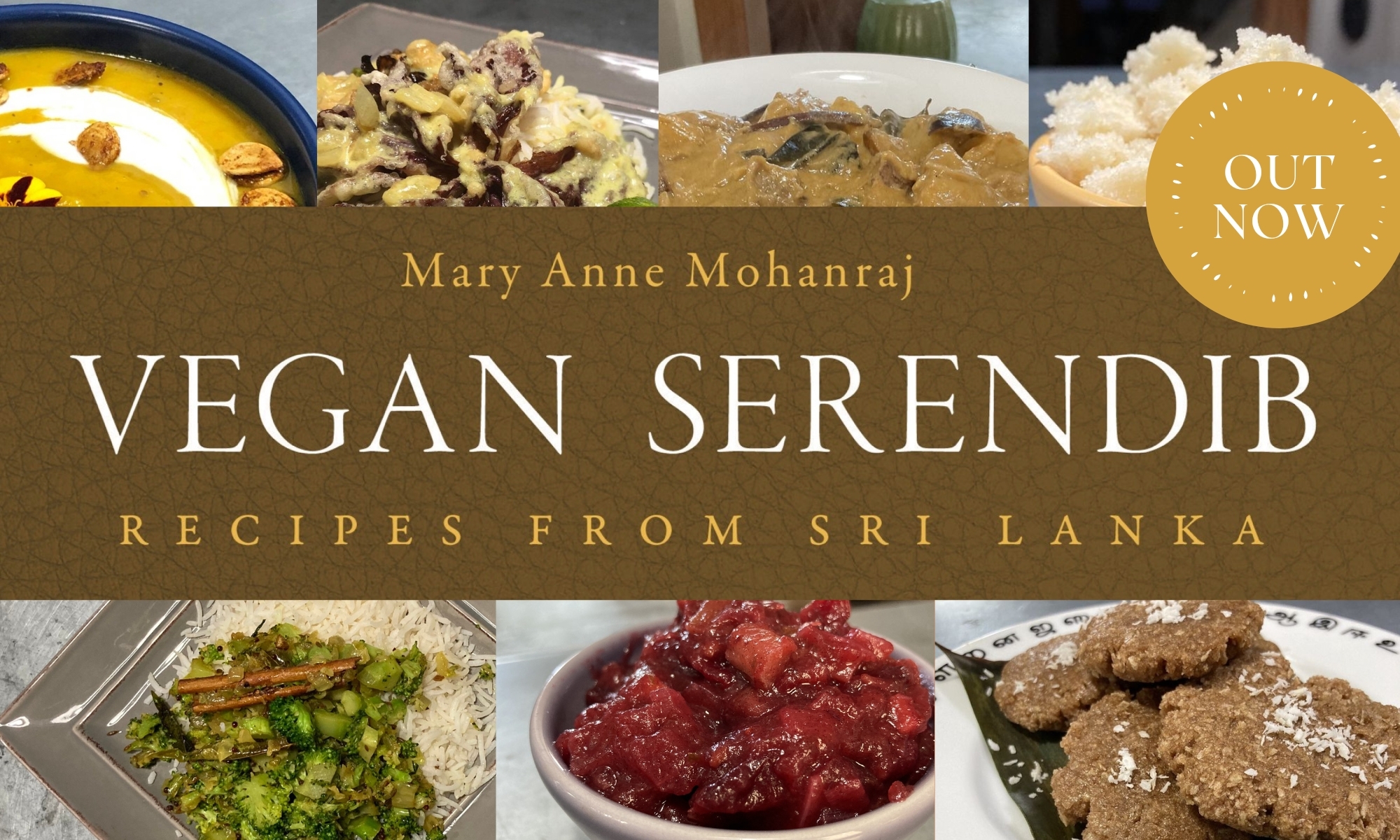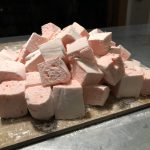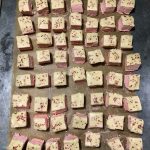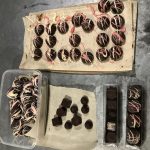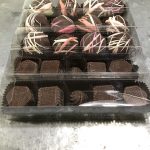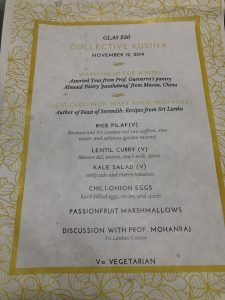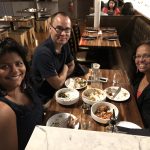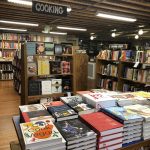My GOD, these are luscious. Here’s a Valentine’s Day present from me to you, folks. Thanks for reading all my babbling so patiently.
The marshmallows themselves are fluffy and tangy and fruity and delectable — then, when you add the creamy white chocolate (and a sprinkling of pink hearts and sparkly sugar), it just takes it over the top into pure decadence. I like these best of every confection I’ve ever made.
***
“I Plight Thee My Troth” Marshmallows
(rose, passionfruit, and vanilla / love, passion, and home)
3/4 c. passionfruit puree
3 packages unflavored gelatin
1/2 c. water
1 1/2 c. sugar
1/2 c. light corn syrup
1 t. vanilla extract
1 t. rosewater
butter (for greasing the pan)
powdered (confectioner’s) sugar for dusting (about 1/2 c.)
about 1 – 1/2 c. white chocolate chips
pink hearts and sparkly sugar for decorating
1. Empty gelatin packets into bowl of stand mixer (whisk attachment), with passionfruit juice. Stir briefly to combine.
2. In a small saucepan (a bigger one will be heavy and hard to hold steadily at a later stage) combine water, sugar, corn syrup, and salt. Cover and cook over medium high heat for 4 minutes. Uncover and cook until the mixture reaches soft ball stage (240 degrees if you have a candy thermometer), approximately 8 minutes. Once the mixture reaches this temperature, immediately remove from heat; if it continues, it will swiftly turn into hard candy.
4. Turn mixer on low speed and, while running, slowly pour the sugar syrup down the side of the bowl into the gelatin mixture. (Be very careful with the sugar syrup, as it is scaldingly hot and will burn you badly if it gets on your skin.) Once you’ve added all of the syrup, increase the speed to high.
NOTE: The volume is a little more than usual for my marshmallow recipes, as I wanted these on the fluffy side, so have a dishtowel or splashguard ready in case of need; once the mixture starts thickening, you shouldn’t need it anymore.
5. Continue to whip until the mixture becomes very thick and is lukewarm, approximately 12 minutes. Add food color if desired — if not, they’ll be white. I added a bit of pink, for the romance of it all. Add vanilla and rosewater.
6. While it’s whipping, butter a large 9 x 12 pan. Prepare an oiled spatula. Pour the mixture into the prepared pan, spreading it evenly (and swiftly) with the oiled spatula.
7. Dust the top with enough of the powdered sugar to lightly cover. Reserve the rest of the powdered sugar for later. Allow the marshmallows to sit uncovered for at least 4 hours and up to overnight.
8. Turn onto a board, cut into squares, and dust all sides of each marshmallow with the remaining powdered sugar, using additional if necessary. (They are very yummy as is, so feel free to stop at this point.)
9. Melt white chocolate using either double boiler method, or at half power in the microwave (stirring every 30 seconds after 2 minutes until melted). Dip marshmallows and turn over to sit on parchment or wax paper.
10. Decorate with hearts and sprinkles before the chocolate sets up. Let set. May be stored in an airtight container for up to 3 weeks, or frozen (in a flat layer, with sheets of wax paper between).
